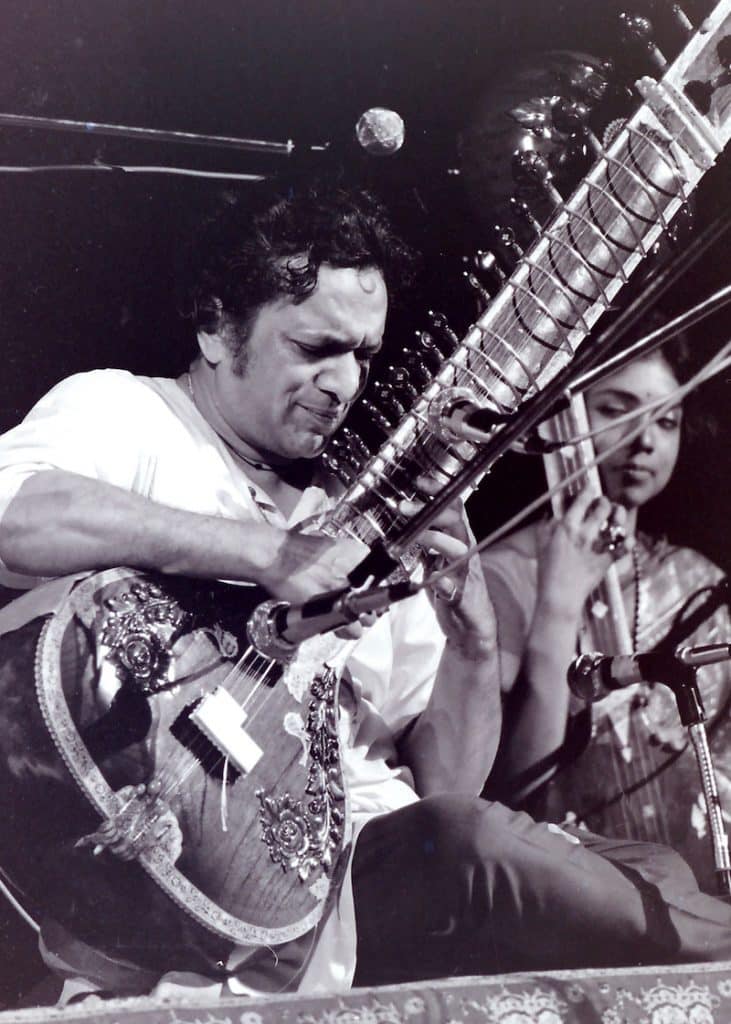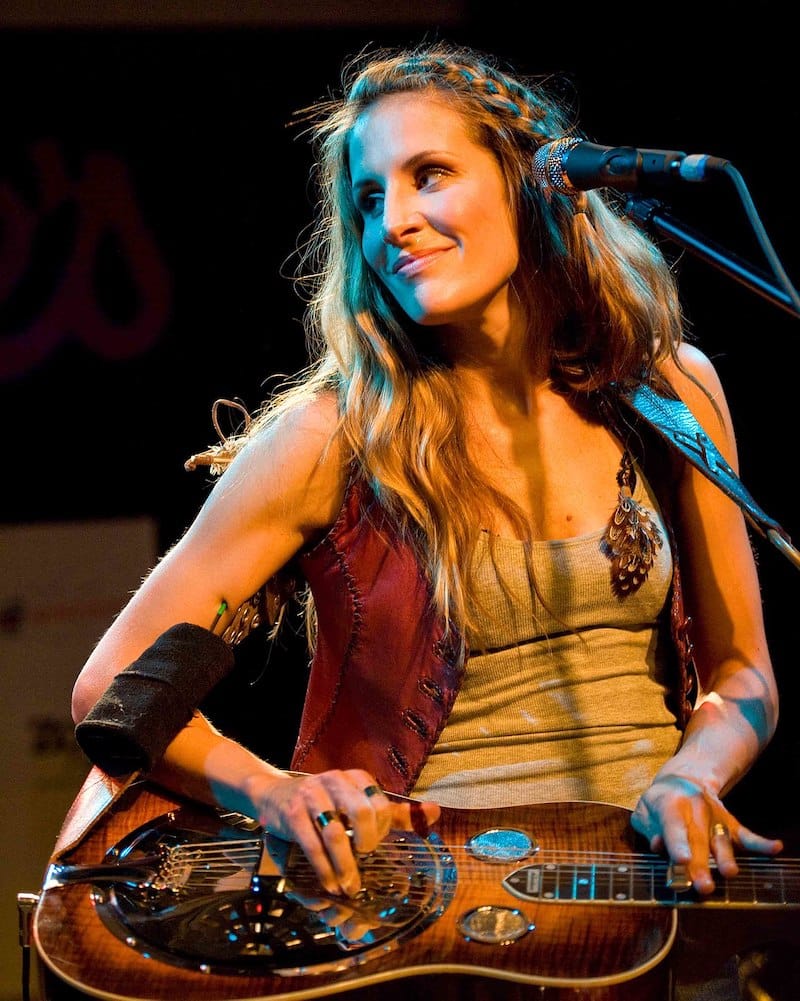It’s no secret that the sitar is an amazing and complex instrument. It can produce a wide spectrum of sounds, from deep bass notes to high-pitched twangs.
However, unless you’re a musician or someone who has studied Indian classical music in depth, it would be pretty difficult for you to know more than just a few famous people who play the sitar.
In this blog post, we’re going to look at 19 of the greatest and most famous sitar players who have championed this amazing and unusual instrument. Ready? Read on!
1. Ravi Shankar
If you’ve heard the sitar in Western music, it’s probably because of Ravi Shankar. He was the Indian sitar virtuoso who helped to popularize the instrument outside of India. He is also connected to many top sitar players.
Ravi had a distinct style and used unconventional rhythm combinations in his music. He composed sitar pieces for orchestra and toured the world starting in 1956, both performing and teaching others how to play and appreciate the sitar.
You can hear his music on 76 albums and 18 films. He also received around 30 awards, including governmental honors and five Grammys.
2. Anoushka Shankar
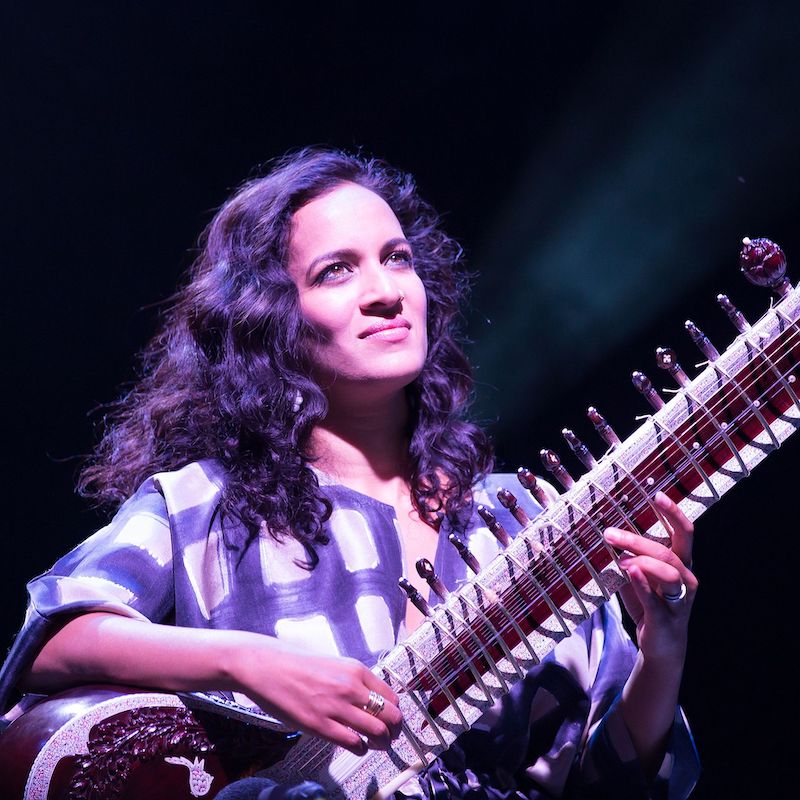
Daughter of sitarist Ravi Shankar and the half-sister of American singer-songwriter Norah Jones is next, Anoushka Shankar. She began studying sitar and classical Indian music with her father at age nine.
She made her professional debut at 13, signed a record deal at 16, and started touring the world with her father as a fellow virtuoso at 18.
Anoushka has recorded eight albums, has been a part of six live albums, and has performed on many other albums. She has won several awards, been nominated for nine Grammys, and was the first Indian musician to present or perform live at the Grammys.
3. Annapurna Devi
Our next Indian sitar virtuoso is Annapurna Devi, who only performed during the 1940s and 1950s. She was the daughter of sarod-master Allauddin Khan and married one of his students, Ravi Shankar.
Annapurna performed duets with Ravi in the 1950s. However, she stopped accepting payment for concerts because she felt she was selling Saraswati (the Indian goddess of music).
Annapurna made a religious vow to withdraw from the public eye to try to save her relationship with Ravi. She then spent the next 60 years in her apartment. George Harrison was reportedly the only outsider allowed to hear her play in her home after her retreat. Despite her short career and seclusion, Annapurna won two awards for her music.
4. George Harrison
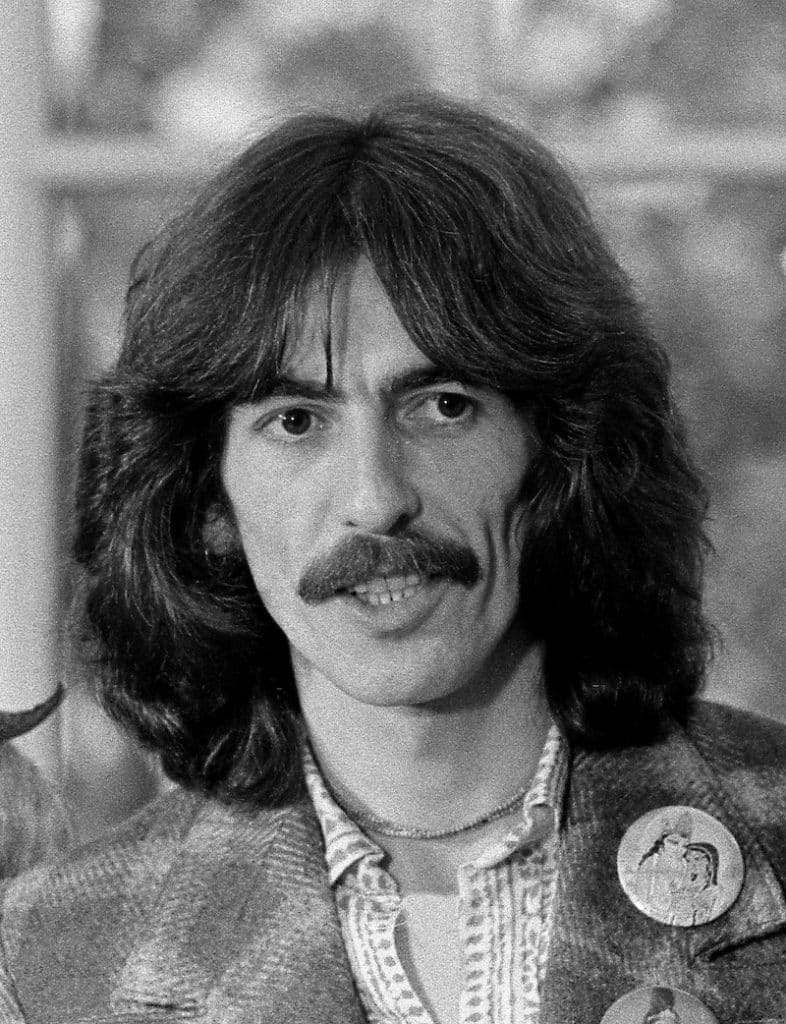
British Beatles guitarist George Harrison was instrumental in popularizing Indian instruments in popular music throughout the 1960s. Harrison first discovered Indian music through an Indian music ensemble in the Beatles movie Help!
His subsequent 1965 release of “Norwegian Wood” marked the sitar’s entry into Western pop music. Harrison soon went to India to take sitar lessons from Ravi Shankar.
The documentary film of these lessons, Raga, along with Harrison’s Indian-influenced music, inspired other 1960 rock bands to create raga rock. His use of the sitar on “Within You Without You” is still one of the best Indian-inspired pieces of Western pop.
5. Nikhil Banerjee
From Calcutta, India, Nikhil Banerjee’s music features breathtaking speed, technical perfection, and clinical performance.
At age nine, Nikhil became the youngest musician to work for All India Radio. After hearing him on the radio, Allauddin Khan (Annapurna Devi’s father and Ravi Shankar’s teacher) agreed to take Nikhil on as a student at age 16.
He began touring outside India in 1954. In 1968, he became India’s Outstanding Musician of the Year and received the honorary title of Padma Shri.
Nikhil performed around the world throughout his life but had little interest in wealth and luxury from fame. He had many musical disciples as a professor at the Ali Akbar College of Music.
6. Vilayat Khan
Up next is Vilayat Khan, famous for creating and developing the gayaki ang sitar technique, which mimics the human voice. His Indian father and grandfather were both leading sitar players and taught him to play in the Imdadkhani gharana style.
Khan released his first sitar recording at age six. He then went on to perform concerts and broadcast on All India Radio until his death.
Vilayat used his fame and sitar success to live like a king. He collected fast cars, colognes, clothing, pipes, and guns. He refused several awards, insulted that lesser junior musicians had already received them.
He did, however, accept being named Bharat Sitar Samrat (India’s Emperor of the Sitar) and Aftab-e-Sitar (Sun of the Sitar).
7. Prem Joshua
Born in Germany, Prem Joshua learned to play the flute and saxophone as a young child. At 18, he traveled to India to study the country’s folk music.
While in India, Prem was fortunate enough to study under the tutelage of Usman Khan, a third-generation sitarist. He also adopted the name “Prem,” which translates to “love” in Hindi, as his first name.
Prem mixes the Hindustani music of the East with contemporary lounge trance music of the West. He plays sitar, flutes, soprano sax, and vocals, accompanied by a world-fusion band. In his prolific career, Prem has released over 20 albums, each one a testament to his talent.
8. Gabby La La
American Gabby La La describes her music and personal style as “fun, unique, crazy, and kooky” — a fitting description for an artist who effortlessly brings together a myriad of musical influences and instruments.
Gabby has classical training in the sitar. However, her talent extends beyond this single instrument. Gabby also plays the ukulele, accordion, theremin, and toy piano.
Often likened to a “mashup of Hello Kitty and Yoko Ono,” Gabby presents a playful, child-like persona and voice that perfectly complements her fun and energetic music.
While she primarily performs as a solo artist, Gabby’s musical collaborations are equally impressive. She has lent her voice to the bands Weapon of Choice and Les Claypool’s Fancy Band.
9. Reenat Fauzia
Hailing from a prominent family of Bangladeshi musicians, Reenat Fauzia‘s musical lineage is nothing short of illustrious. Her family, including her parents, siblings, paternal uncles, maternal aunts, and grandfather, are all esteemed figures in the world of music.
Reenat’s sitar training was under the guidance of her cousins, Hossain Khan and Khurshid Khan. Her musical journey further led her to the Chhayanaut Music Institute in Bangladesh, where she honed her skills on the sitar for five years.
In 1987, Reenat began showcasing her sitar prowess on Bangladesh Television. Besides her performances, she shares her knowledge and passion for the instrument by teaching sitar at Chhayanaut. In 2009, she was honored with the Anannya Top Ten Award.
10. Brian Jones
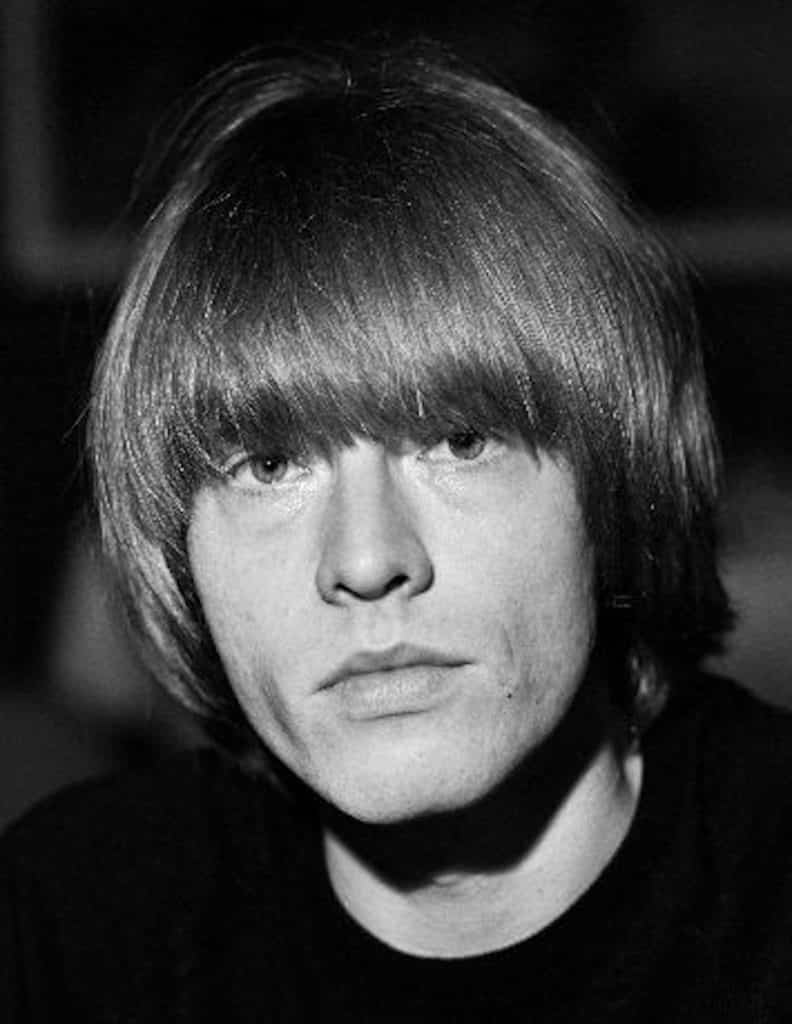
Best known as the founder of the Rolling Stones, Brian Jones was a multi-instrumentalist with an impressive range. His repertoire included the guitar, sitar, piano, harmonica, Mellotron, keyboards, and several wind instruments.
Jones first encountered the sitar at George Harrison’s house, sparking an interest that would soon become a significant part of his musical journey. Not long after this initial introduction to the instrument, The Rolling Stones released “Paint It Black,” one of the most renowned Western songs featuring the sitar.
Apart from “Paint it Black,” Jones also played the sitar on The Rolling Stones’ “Street Fighting Man.” His exploration of the instrument extended beyond his work with the Stones, as he also played the sitar for Jimi Hendrix in “My Little One” and “Ain’t Nothin’ Wrong with That.”
11. Shahid Parvez Khan
Coming from a musical Indian family, Shahid Parvez Khan received training from his father, grandfather, and uncle. He’s a 7th-generation sitar player of the most ancient school of Indian music, Gwalior gharana.
Shahid uses vocalistic phrasing at the end of his notes and a slow then accelerating improvisational style. He also uses plucked string tantrakari techniques, allowing him to explore rhythm patterns with his right hand.
Shahid has played sitar at music festivals in India and around the world. He has also received the Padma Shri and Sangeet Natak Academy Awards for his distinguished playing. It’s currently possible to study the sitar online one-on-one with this sitar master.
12. Rais Khan
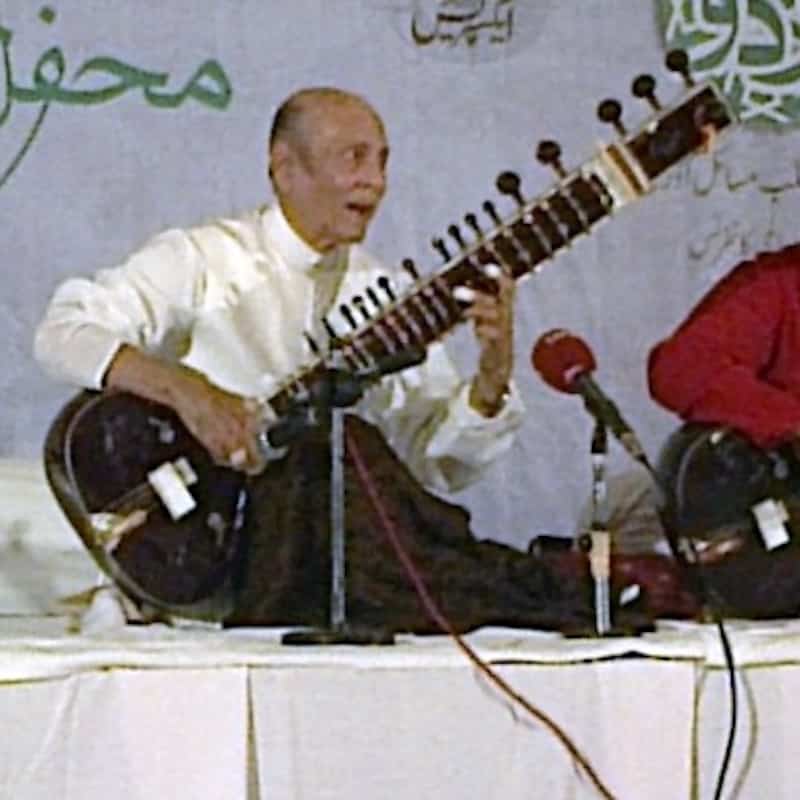
Although Rais Khan was initially from India, he became a famous sitarist as an immigrant to Pakistan.
Rais belonged to the classical Mewati gharana musical lineage. He learned his beenkar style from his father and gayaki ang style from his mother.
Rais was known for becoming jealous of any pupils who started to show talent and terminating lessons with them.
He had several hit songs related to his association with film composers. In fact, film composer Madan Mohan would never compose a ghazal without him.
In 2017, Rais received Pakistan’s third-highest civilian honor, the Sitara-i-Imtiaz (Star of Excellence), for his contribution to music.
13. Al Gromer Khan
Next on our list is Al Gromer Khan, a sitar player, composer, author, and visual artist from Germany. He creates contemplative ambient, world, new age, and electronic music for radio, television, and film.
Al first traveled to India, Tangier, and London as a jazz musician and beat poet. However, after hearing Vilayat Khan at a concert in London, he spent the next seven years mastering the sitar under Imrat Khan. He was also the first outsider accepted into this Gharana.
Since it’s usually a musical tradition passed to sons, Al added Khan to the end of his name. Al currently lives in Germany but travels throughout Europe and India performing classical Indian music.
14. Nishat Khan
Hailing from Kolkata, India, Nishat Khan blends classical Indian music with Western genres, such as Western classical music, Flamenco, jazz, and Gregorian chants.
Nishat is a member of the prestigious Etawah Gharana musical families and schools. He studied under Imrat Khan, the nephew of Vilayat Khan. When he was three, he started playing the sitar and gave his first concert at age seven.
Throughout his career, Nishat has composed and produced music with other musicians, such as John McLaughlin, Phillip Glass, Evelyn Glennie, and Paco Peña. He’s released 15 albums and composed two film scores.
15. Imrat Khan
Hailing from a lineage steeped in music, Imrat Khan received his sitar training from their uncle Wahid Khan. His family’s musical roots can be traced back to the Etawah gharana, spanning 400 years.
Imrat performed worldwide but spent time teaching classical sitar to students at Washington University in St. Louis. He also released several albums and has music in films by Satyajit Ray and James Ivory.
Despite his significant contributions, Imrat’s career was somewhat overshadowed by his brother Vilayat’s musical success. However, this did not diminish his dedication or passion for music.
In an act of principled defiance, Imrat refused to accept the Padma Shri award from the Indian government, one of the country’s highest civilian honors. He felt the recognition was “too little and came too late,” especially since several of the musicians he had trained had already been bestowed with the honor.
16. Anjan Chattopadhyay
Born into an aristocratic Bengali family in India, Anjan Chattopadhyay embarked on his musical journey under the tutelage of his brother, Pandit Chattopadhyay. He wanted his sitar to sing like a vocalist, leading him to study under various teachers such as Vidushi Kalyani Roy and Vilayat Khan.
Anjan’s style is characterized by its soft, serene nature that embodies the essence of classical Indian music. His talent has led him to perform hundreds of concerts both in India and on international stages.
Over the course of his career, he has released eight albums and been recognized with 11 awards. Beyond his performances and recordings, Anjan has contributed to the development of Sangeetpedia, a multimedia platform dedicated to Indian classical music.
17. Lowell George
A versatile American musician and songwriter, Lowell George was known for his mastery over a wide range of genres, like rock, blues rock, Southern rock, country rock, R&B, blues, and funk. He was also proficient in playing various instruments, including the sitar.
His journey with the sitar began under the guidance of Ravi Shankar. Lowell studied this instrument at a Los Angeles school run by Ravi, becoming one of his Western students.
Throughout his career, he played with notable bands such as Zappa and the Mothers of Invention and Little Feat. Additionally, he was a sought-after session player for various artists.
Lowell was known for his relentless pursuit of musical perfection, constantly striving to improve and refine his craft. Sadly, his promising career was cut short tragically. At the young age of 34, he suffered a heart attack.
18. Justin Hayward
A key figure in British music, Justin Hayward is best known as the lead singer, songwriter, and guitarist for The Moody Blues. His musical talents extended to the mandolin and sitar, adding depth and diversity to his performances.
The Moody Blues’ album, In Search of the Lost Chord, showcased several songs in the raga rock style. Among these, “Om” stands out as a popular track wherein Justin showcases his sitar-playing skills. This album marked a significant milestone in their musical journey, with Justin humorously remarking, “Everything the Beatles did, we did 24 hours later.”
After the band’s break-up, Justin embarked on a solo career. However, he rarely played the sitar following that album, and the instrument eventually found its home in the Rock & Roll Museum in London.
19. Emily Robison Strayer
An accomplished American singer-songwriter and musician, Emily Robison Strayer was one of the original members of The Chicks (previously known as the Dixie Chicks).
Emily picked up the violin when she was seven and started playing the banjo at 10. This early start led her to explore and attempt to master various instruments, such as the guitar, dobro, bass guitar, mandolin, lap steel, accordion, and sitar. Despite her proficiency in these instruments, she identifies primarily as a banjo player.
With The Chicks, Emily has released eight studio albums. In addition to her work with the band, she also collaborated with her sister to release two albums under the name Court Yard Hounds.
Summing Up Our List Of Famous Sitarists
Sitar players have a huge influence on the world of music with the instrument being used by traditional Indian classical musicians to Western rock stars. Sitar masters are revered for their virtuosity and cultural significance.
We hope you’ve enjoyed learning a bit more about the instrument and the musicians that play it. We’ll be updating this article with some more sitarists, so let us know who to add next!

